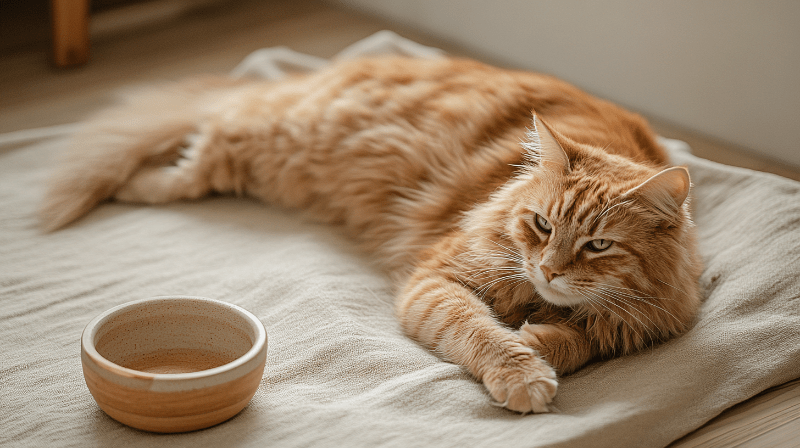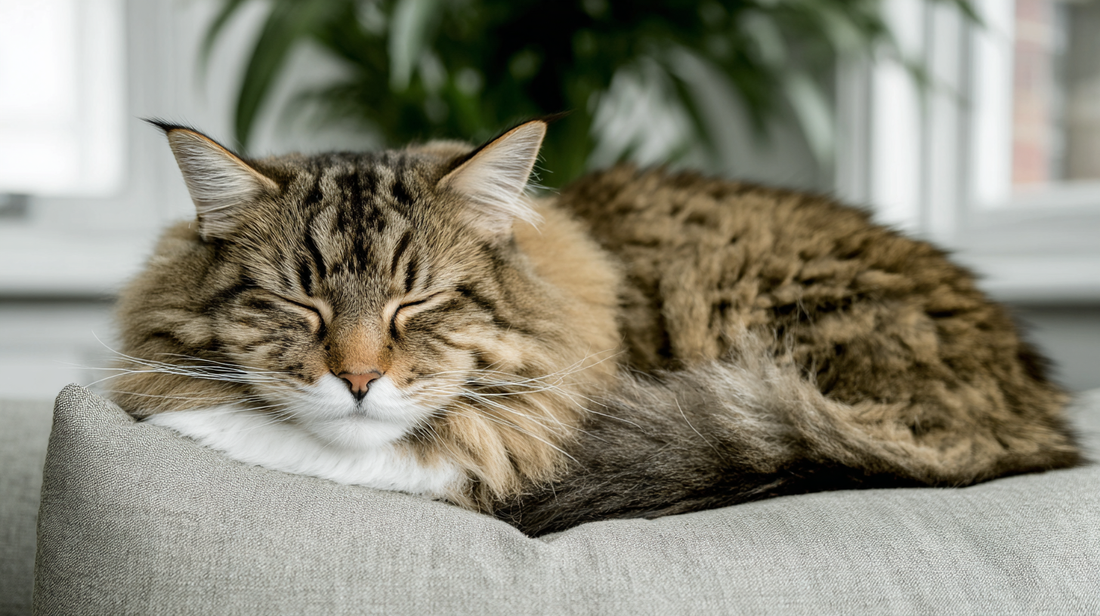Many cat owners notice subtle changes in their feline companions as time passes - increased sleep, decreased play, and reluctance to jump as they once did. These behavioral shifts, often dismissed as simply "getting old," could actually signal a common yet frequently underdiagnosed condition: feline osteoarthritis (OA). OA is a progressive degenerative joint disease characterized by the repair and degeneration of articular cartilage, alongside alterations in subchondral bone metabolism, osteophytosis, and synovial inflammation. This painful condition can reduce mobility in cats of all ages, with clinical studies revealing that even cats as young as two years can develop OA. What's particularly concerning is that over 90% of cats older than 12 years show radiographic evidence of OA. Recognizing the subtle signs and understanding your veterinarian's diagnostic approach are essential steps in ensuring your beloved feline companion enjoys a comfortable and active life.
Summary
Why feline osteoarthritis can be easily missed
Unlike dogs, who typically display obvious lameness as a major clinical symptom of OA, cats excel at masking pain. Their natural self-preservation instinct, rooted in their solitary and territorial behavior, drives them to conceal discomfort. Many cat owners and even some veterinarians might overlook the early, more subtle indicators of OA, mistaking them for normal aging or typical feline behavior. Despite approximately 40% of all cats exhibiting clinical signs of osteoarthritis, the condition remains woefully underdiagnosed, with only an estimated 13% of affected cats globally receiving a diagnosis. This diagnostic gap highlights the challenge of recognizing chronic arthritic pain in cats, as the primary indicators often manifest as gradual changes in behavior and lifestyle that you might not immediately associate with pain. For this reason, you must remain vigilant and attentive to even minor changes in your cat's daily routines.
Recognizing the subtle clinical signs: What to watch for at home
The key to early detection of feline OA lies in observing changes in your cat's behavior and lifestyle. These changes typically develop gradually, making them easy to miss without careful attention. Subtle symptoms you might notice include a reluctance to move and general apathy. Here are important signs that could indicate your cat is experiencing the pain and stiffness associated with OA:
Reduced ability or hesitation to jump up or down from furniture, windowsills, or countertops. You might observe your cat attempting to jump but failing to make it, or choosing an easier, less direct route. This reluctance to jump typically indicates knee joint OA.
Decreased overall activity. Your cat may spend noticeably more time sleeping and show less interest in previously enjoyable play activities.
Less agile movement, appearing stiff or stilted, especially after periods of rest. Your cat's movements might appear less fluid or characteristically "feline." Watch for this stiff or stilted gait as a telling sign.
Difficulty or reluctance to use stairs that were previously navigated with ease.
No longer attempting to reach high spots they once regularly enjoyed visiting.

Altered grooming habits
Decreased grooming resulting in a matted or scruffy coat. Your cat may neglect certain areas that cause pain when reached, as discomfort over joints or pain when turning to groom specific areas can significantly limit their grooming effectiveness.
Overgrooming of specific areas, possibly as an attempt to soothe underlying joint pain.
Changes in temperament and social interaction
Becoming more grumpy or less tolerant of being touched or handled, especially when you contact areas around affected joints.
Withdrawal and spending more time alone. You may notice your cat interacting less with family members or other pets in the household.
Purring less frequently than has been typical for them.

Changes in daily habits
Sleeping in different locations, such as on the floor instead of their usual elevated spots. This behavior often stems from difficulty jumping. You might also notice a hunched or tucked-up position instead of their normal curled-up posture when sleeping.
Eliminating outside the litter box due to pain when climbing in or positioning for elimination.
Subtle physical signs
A hunched or tucked-up posture rather than a relaxed, curled-up position when resting or sleeping.
Vocalizing or hissing when moving around or being stroked over joints—a direct expression of pain.
How veterinarians diagnose feline osteoarthritis
If you notice any of these signs in your cat, consulting with your veterinarian promptly is crucial. Diagnosing feline OA involves a comprehensive approach:
Detailed owner history
Your observations at home provide invaluable diagnostic information. Be prepared to discuss any changes you've noticed in your cat's behavior, activity levels, and daily routines in detail. Your veterinarian may ask specific questions or have you complete a validated questionnaire before or during your consultation to gather this information systematically. These questionnaires are specifically designed to elicit information about changes in mobility, activity levels, grooming habits, and general demeanor. Consider recording your cat on video at home, as this can help your veterinarian observe how your cat moves in their natural environment without the stress of the clinic setting.
Physical and orthopedic examination
During an examination for feline arthritis, your veterinarian will conduct a thorough physical examination, including careful palpation and manipulation of your cat's joints. They will specifically look for several important signs:
Joint thickening or swelling, which can be a clinical symptom of feline OA.
Pain upon manipulation of the joints. While joint pain on palpation is a clinical symptom, keep in mind that not all affected joints will show pain during examination. Your cat may resist restraint or demonstrate marked guarding of painful areas.
Crepitus, a distinctive grating or crackling sensation that occurs upon joint movement.
Decreased range of motion in the affected joints, limiting your cat's mobility.
Your veterinarian will also observe your cat's gait in the consulting room and assess their willingness to jump on and off a chair, providing important clues about any gait abnormalities.
Regarding Radiographic (X-ray) evaluation, your veterinarian may recommend taking X-rays to confirm the diagnosis and assess the extent of the osteoarthritis, but the specific details of this process are not critical to understand at this stage.

Why early diagnosis matters
Partnering with your vet for your cat's comfort
Feline osteoarthritis is an extremely common condition, particularly in older cats, that can profoundly impact your cat's wellbeing. By remaining observant and recognizing the subtle clinical signs, you play a vital role in early detection. Don't dismiss changes in your cat's behavior as merely "getting old" or "slowing down." If you notice any of the signs we've discussed, schedule a consultation with your veterinarian promptly. Beginning to screen your cat as early as seven to ten years of age helps establish a baseline of what's 'normal' for your individual cat and may uncover OA early in the disease process. Together with your veterinarian, you can determine if OA is present and develop an effective management plan to alleviate your cat's pain, helping them enjoy a happier, more active life. Remember, while OA is a progressive condition, its effects can often be successfully managed with appropriate veterinary care.
The information in this article is based on the following scientific publications:
Bennett, D., Ariffin, S.M.b.Z. and Johnston, P. (2012). Osteoarthritis in the cat 1. How common is it and how easy to recognise? Journal of Feline Medicine and Surgery, 14 , pp. 65-75.
Bonecka, J., Skibniewski, M., Zep, P. and Domino, M. (2023). Knee Joint Osteoarthritis in Overweight Cats: The Clinical and Radiographic Findings. Animals, 13 (15), 2427.
Langley-Hobbs, S. and Gilldea, E. (n.d.). Osteoarthritis in Cats. [Adapted from a Zoetis technical bulletin: Feline Osteoarthritis, a Common and Painful Disease].
Lascelles, B.D.X., DePuy, V., Thomson, A., Hansen, B., Marcellin-Little, D.J., Biourge, V. and Bauer, J.E. (2010). Evaluation of a Therapeutic Diet for Feline Degenerative Joint Disease. Journal of Veterinary Internal Medicine, 24 , pp. 487–495.
Looking for a solution? Start here
Stylla Mobility for cats
Supports mobility and active lifestyle
- Helps maintain healthy joints and mobility
- Supports cartilage and connective tissue function
- Encourages an active lifestyle
Made in Switzerland with strict quality standards





